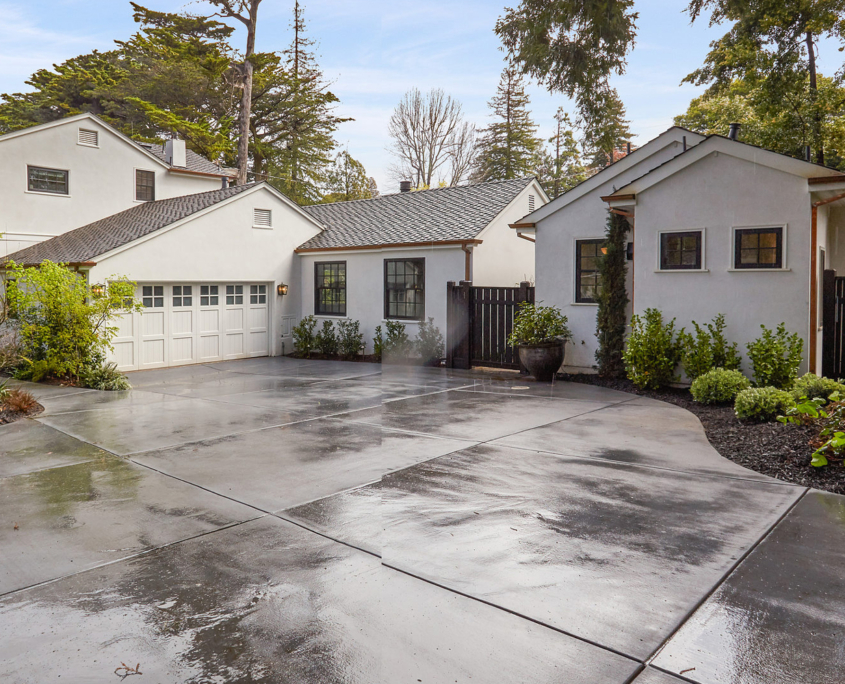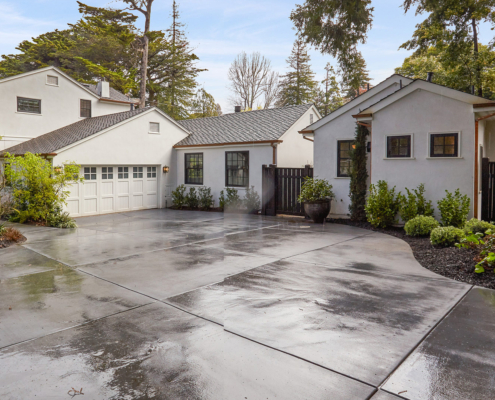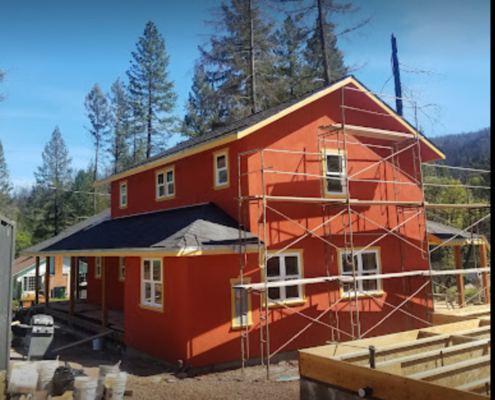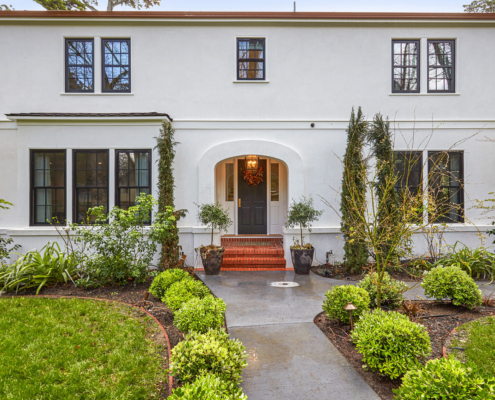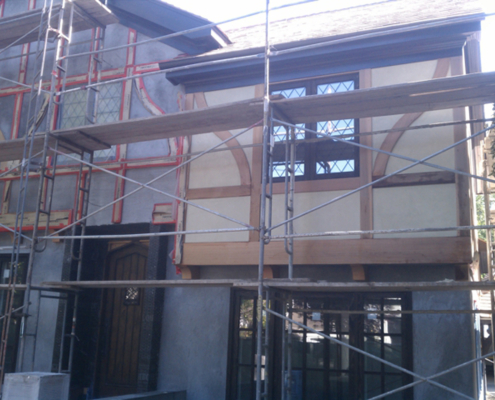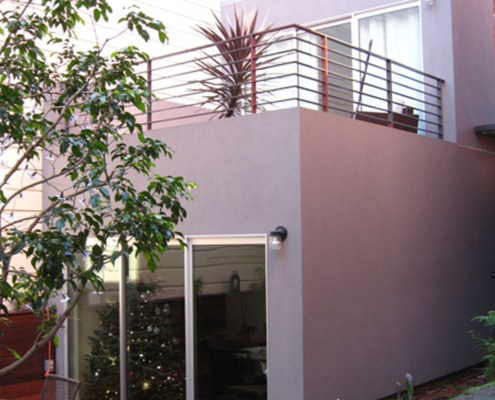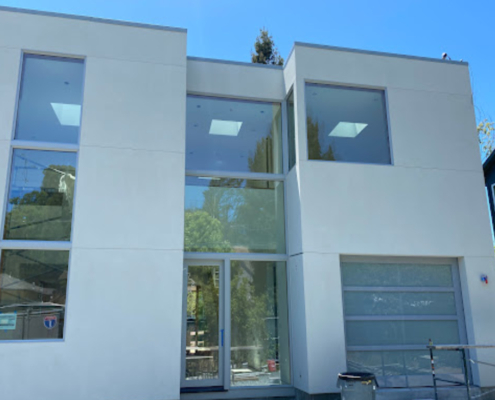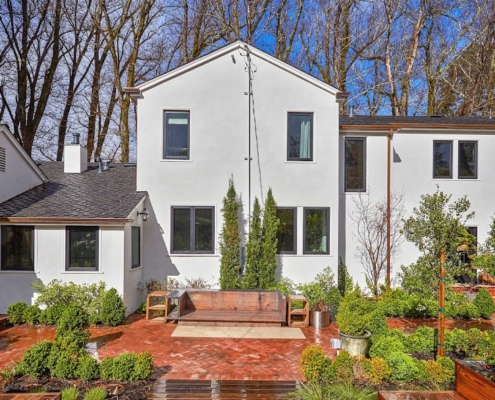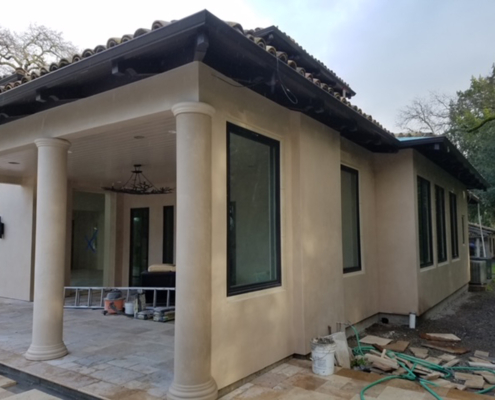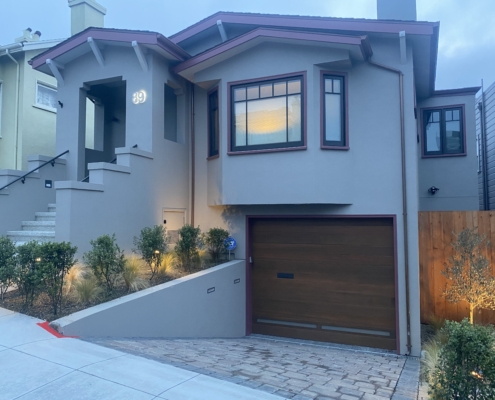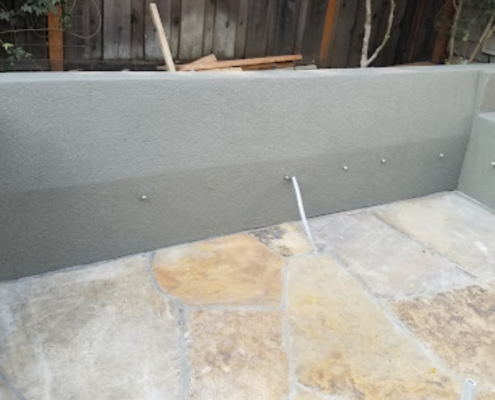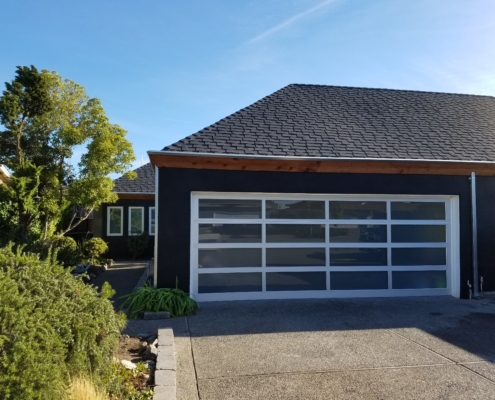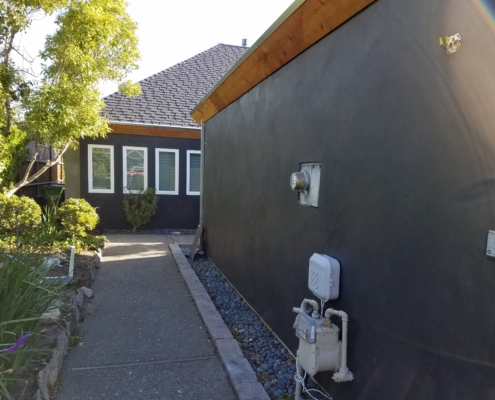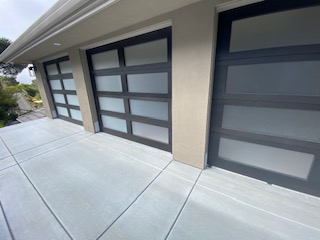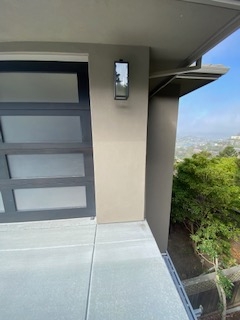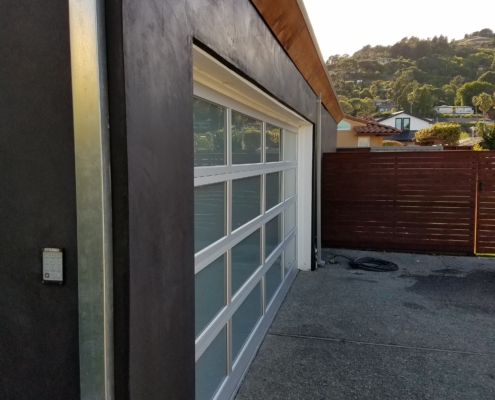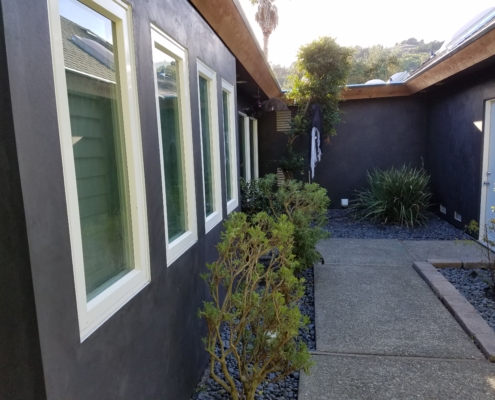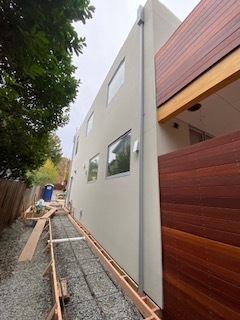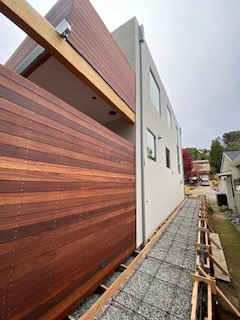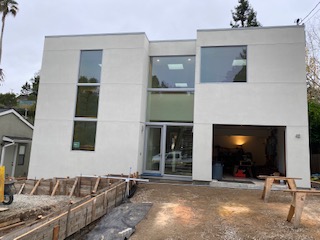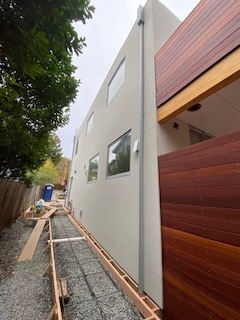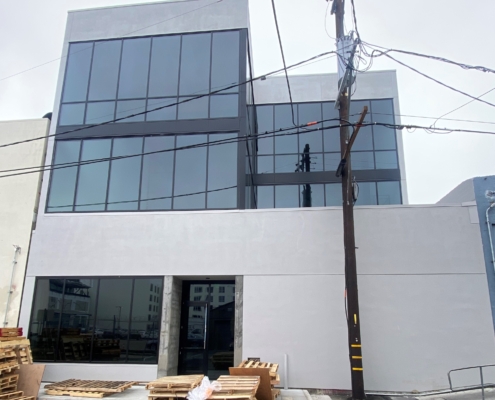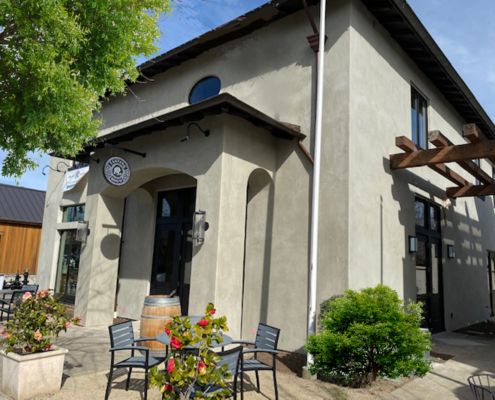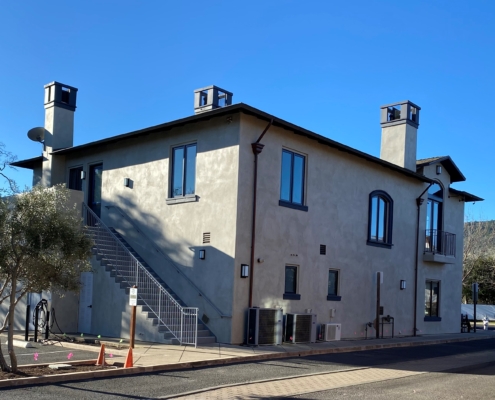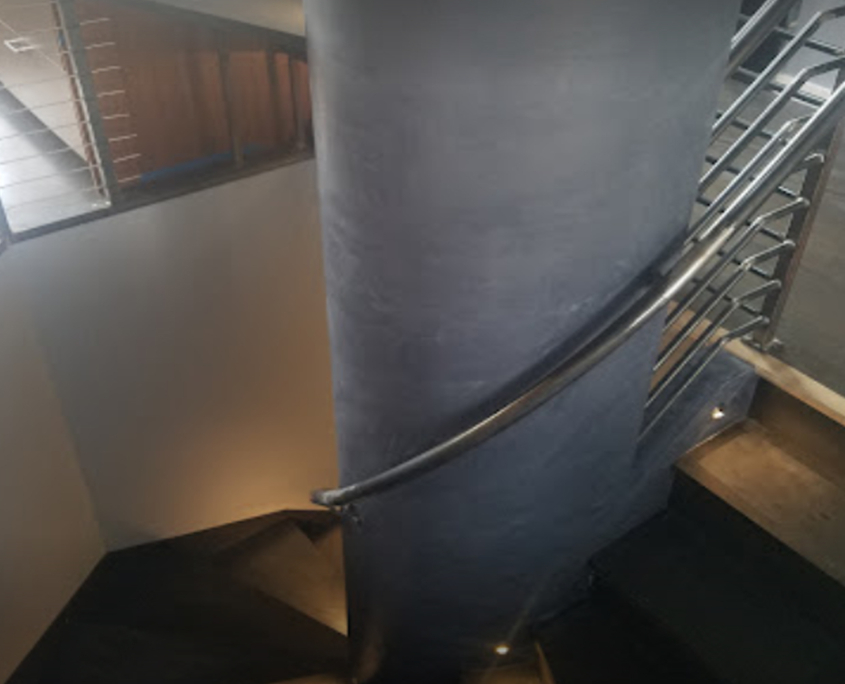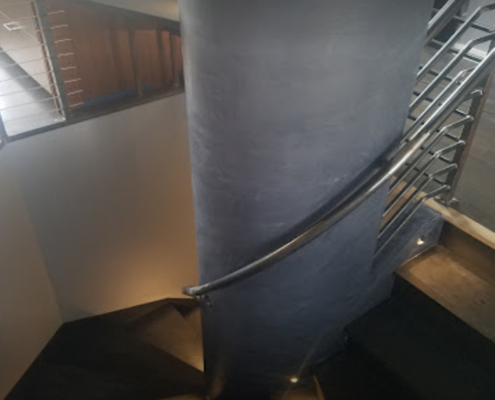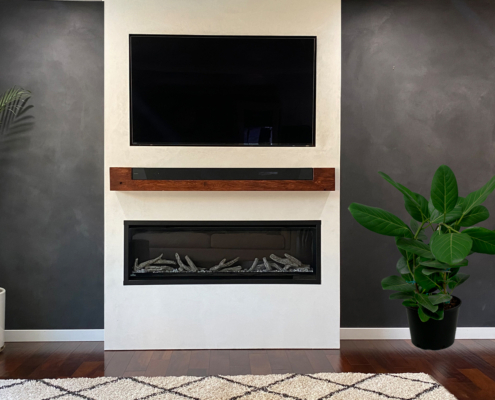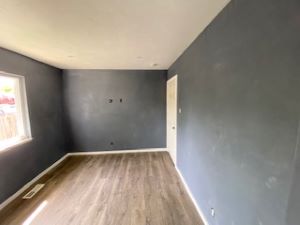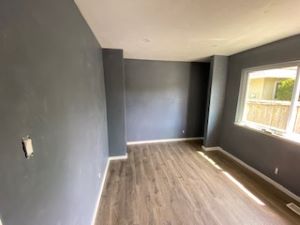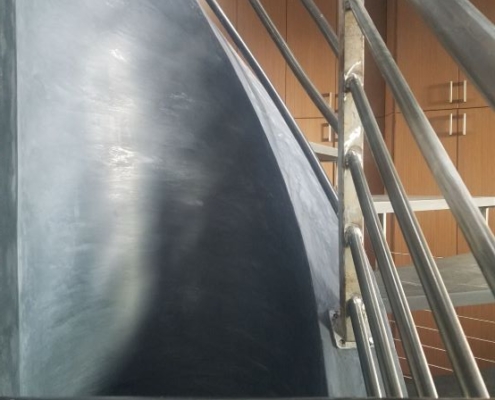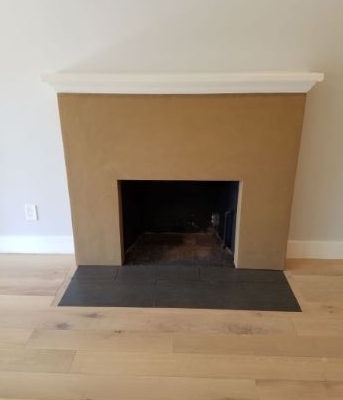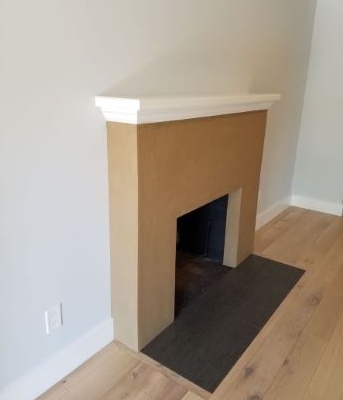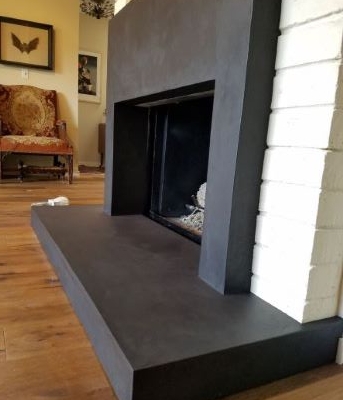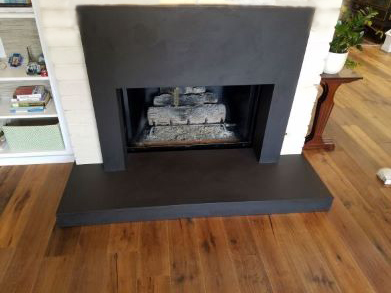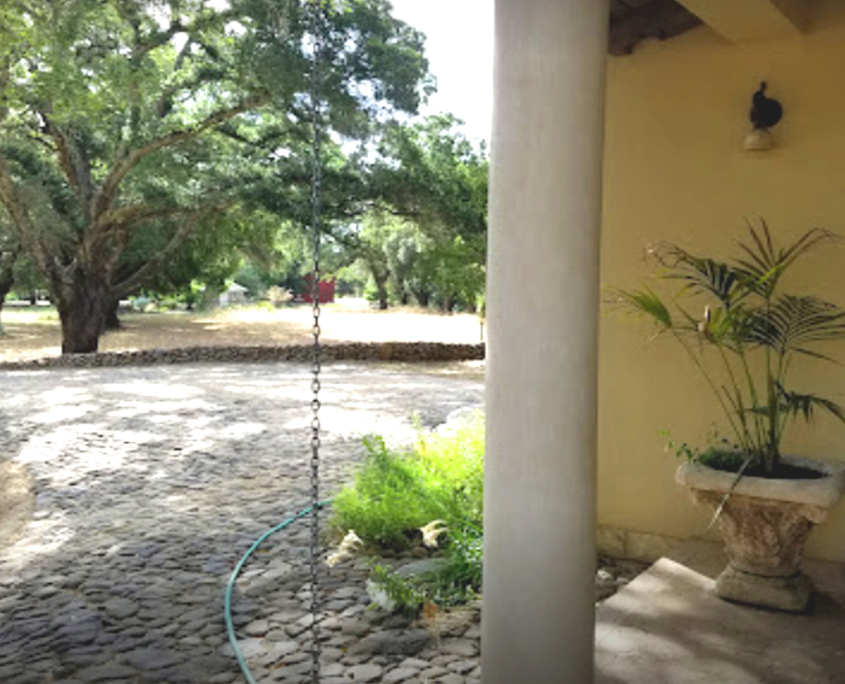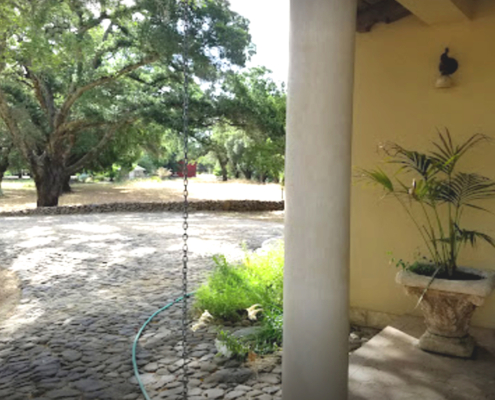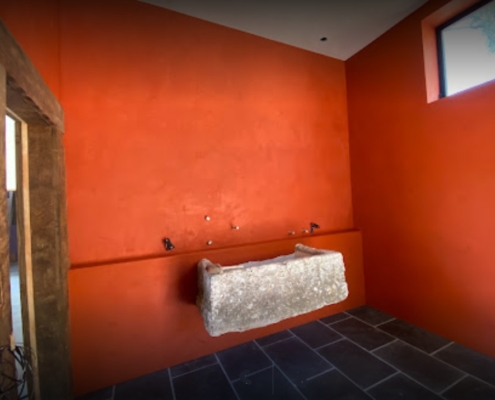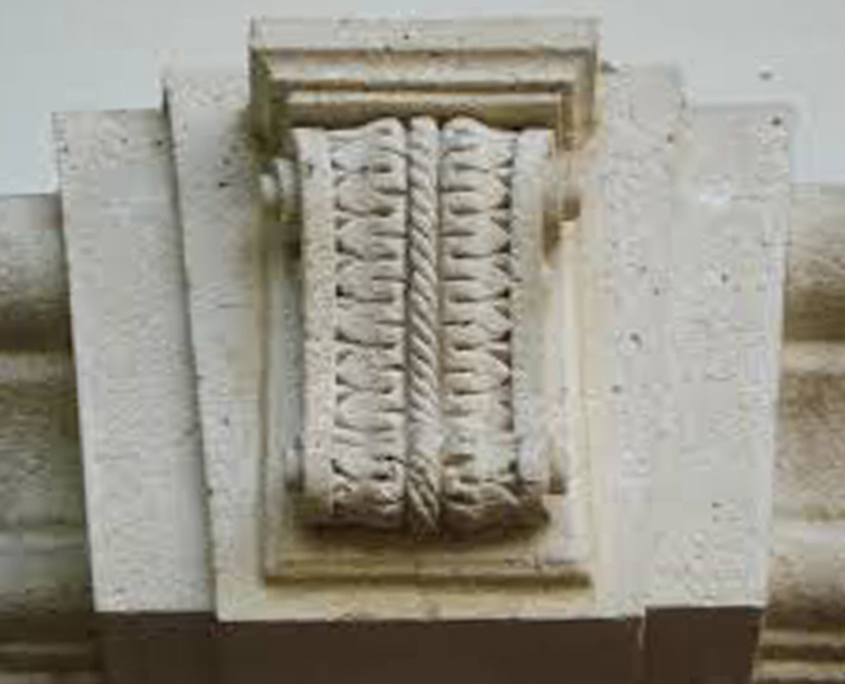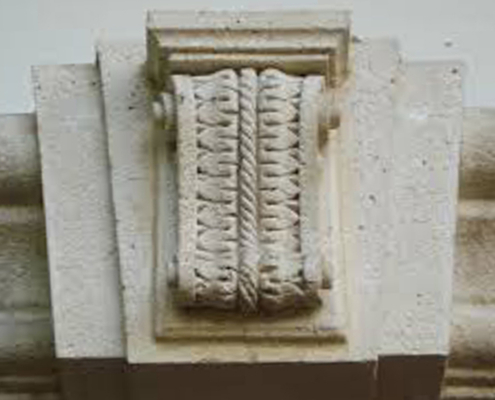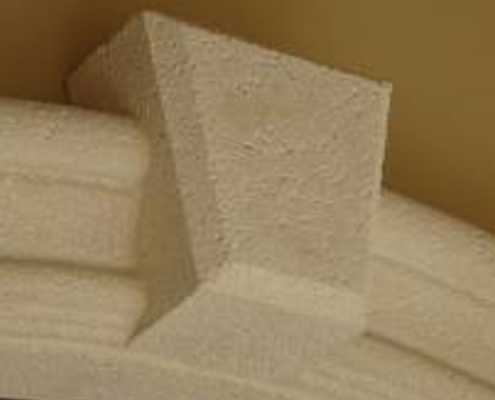Exterior Stucco
Stucco siding is a siding material made of cement, sand, lime, and water. Applied in three coats over a lath base, it provides a solid, durable, and seamless home exterior. Some advantages of stucco include a natural resistance to fire, lasting durability, and low maintenance.
There are two main types of stucco: traditional and synthetic.
Traditional stucco finish is comprised of portland cement plaster (stucco). It consists of portland cement-based materials and sand, mixed with water to form a workable plaster finish.
Synthetic stucco siding usually has an expansive, acrylic-polymer finish, which will expand and contract with the weather. This keeps cracks to a minimum and means the siding can easily last up to 50 years before needing to be replaced.
Because of the application and the material, stucco is an incredible insulator of both warm and cool air. With stucco on the exterior, it is cheap and easy to maintain a constant temperature in your home, no matter what the mercury reads outdoors.
From a design standpoint, you can’t beat the appearance of a good stucco finish. We can add coloring and/or carve into the cement coatings before it dries.
Venetian Plaster
Marmorino Plaster
This type of plaster that is made from lime putty, primarily slaked lime and ground marble, and can be applied to create a wide range of satin, matt and glossy effects, from polished marble with fresco veins and natural stone to the monochrome wall with light and dark shades.
The natural composition of Marmorino makes it naturally mildew resistant and waterproof, preventing architectural deterioration and internal damage. … These qualities have made Marmorino very desirable for luxury bathrooms and other wet areas.
By polishing Marmorino you give it the appearance of solid marble. Often confused with Marmorino plaster, Venetian plaster is also lime-based but adds sand to the aggregate list. The effect of which is a more uniform appearance that is slightly opaquer. As with Marmorino, Venetian is an Italian stucco.
Ornamental Plaster Restoration
One of the hallmarks of a historical home is the ornate plasterwork that adorns the ceilings and moldings. Artisans came from Europe with these skills and made ornamental plasterwork extremely popular in the United States from the early 1800s to the Great Depression. As a result, many homeowners with period homes wonder how to go about restoring ornate plaster in their homes.
If your plaster has been damaged or destroyed by water, age, smoke, foundation settling, construction or other causes, we can restore it to its original design or updated to suit your taste. Our courteous craftsman arrives promptly and will complete your work to your specifications.

